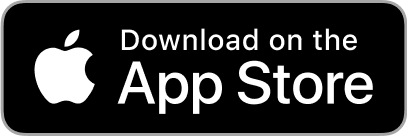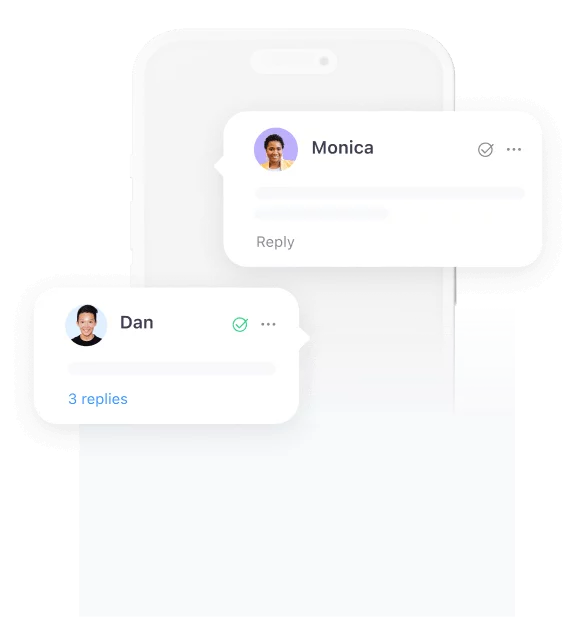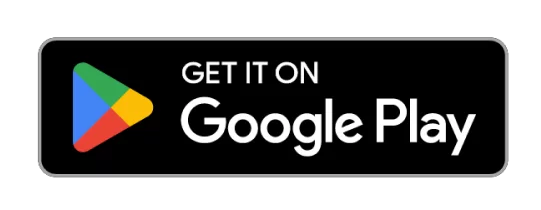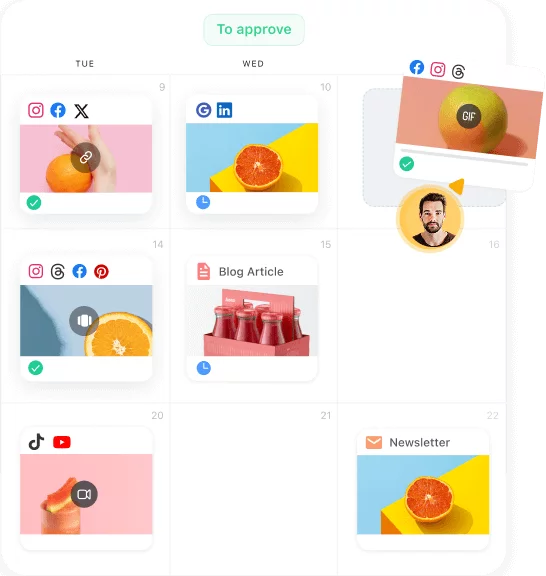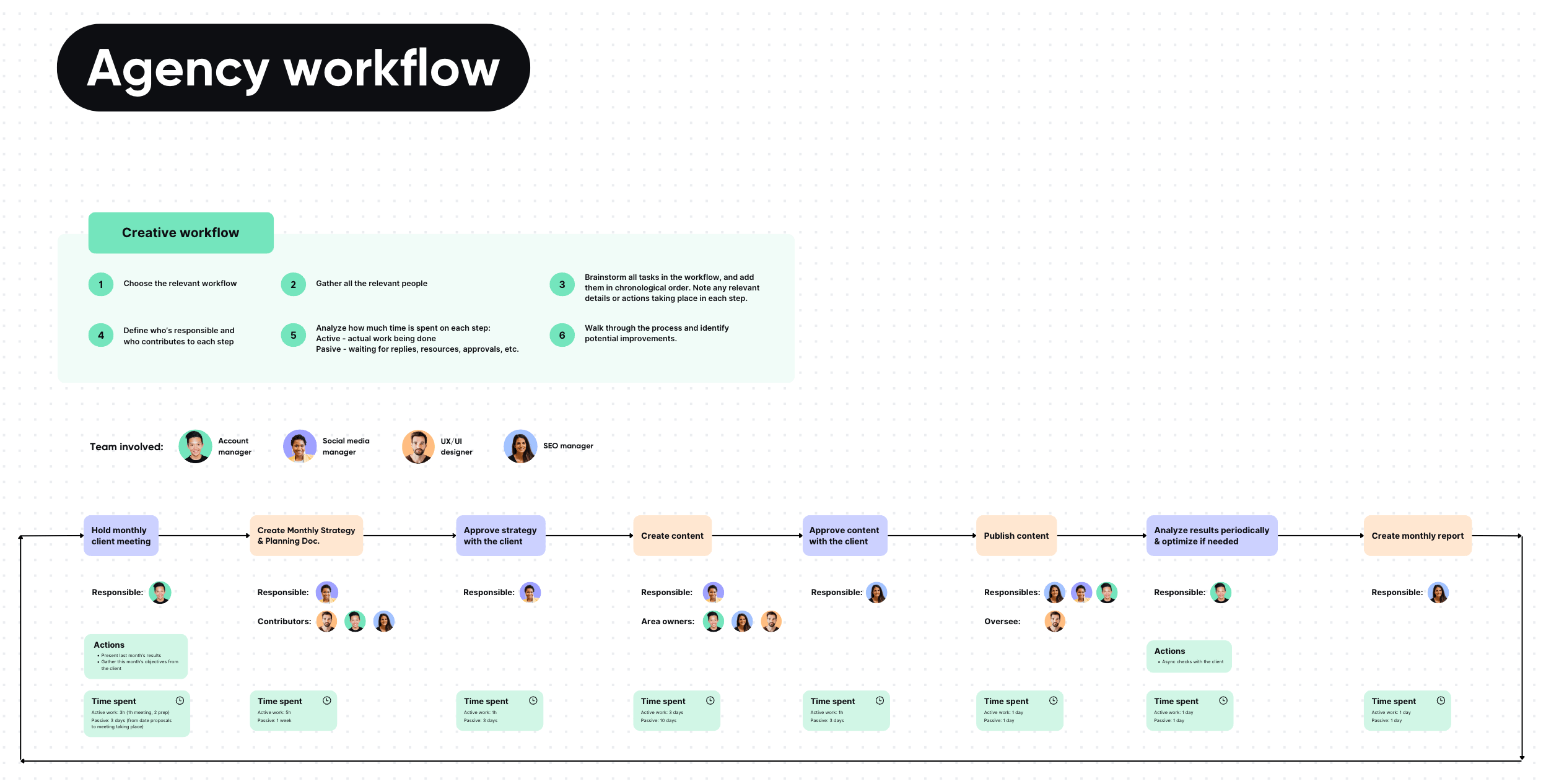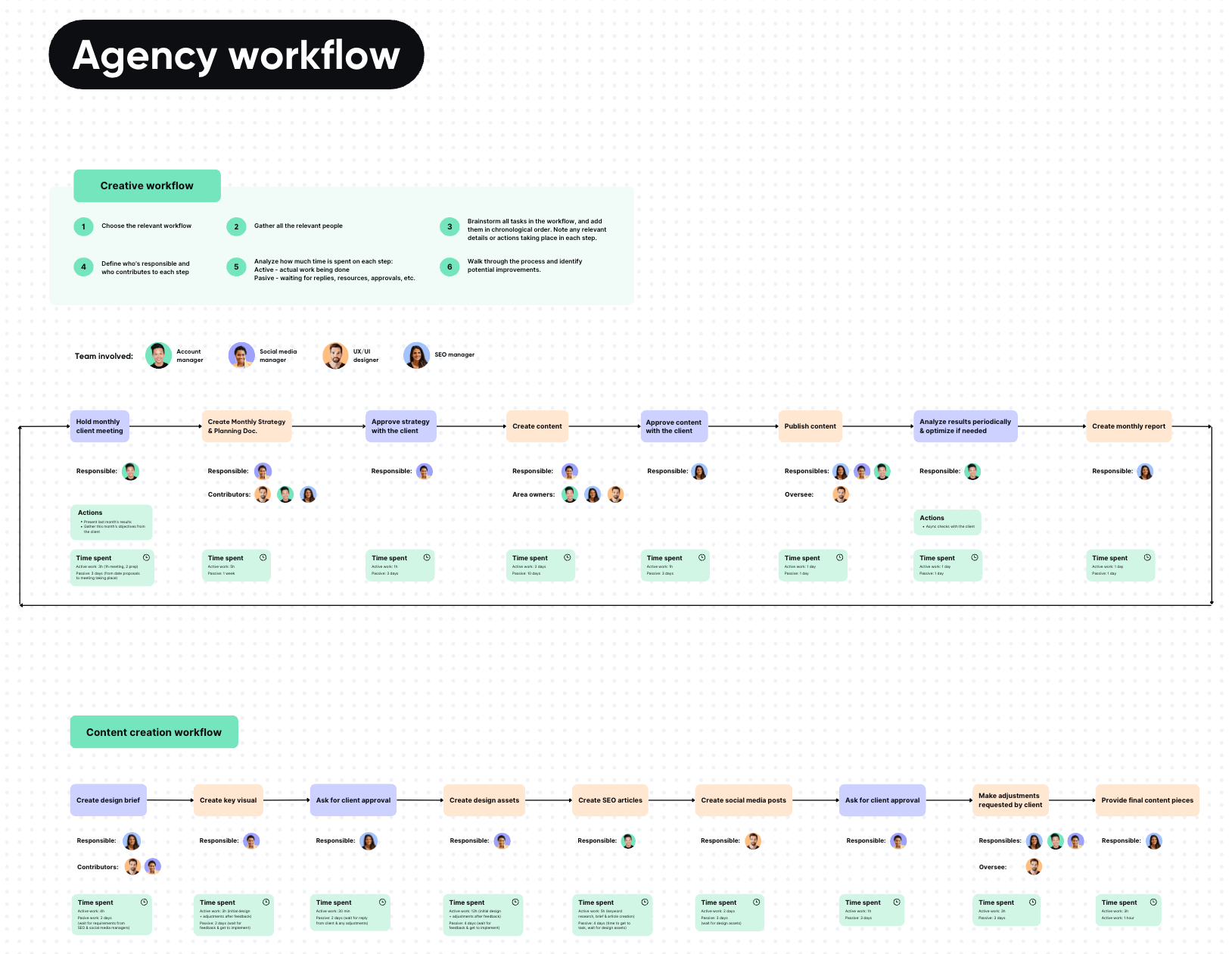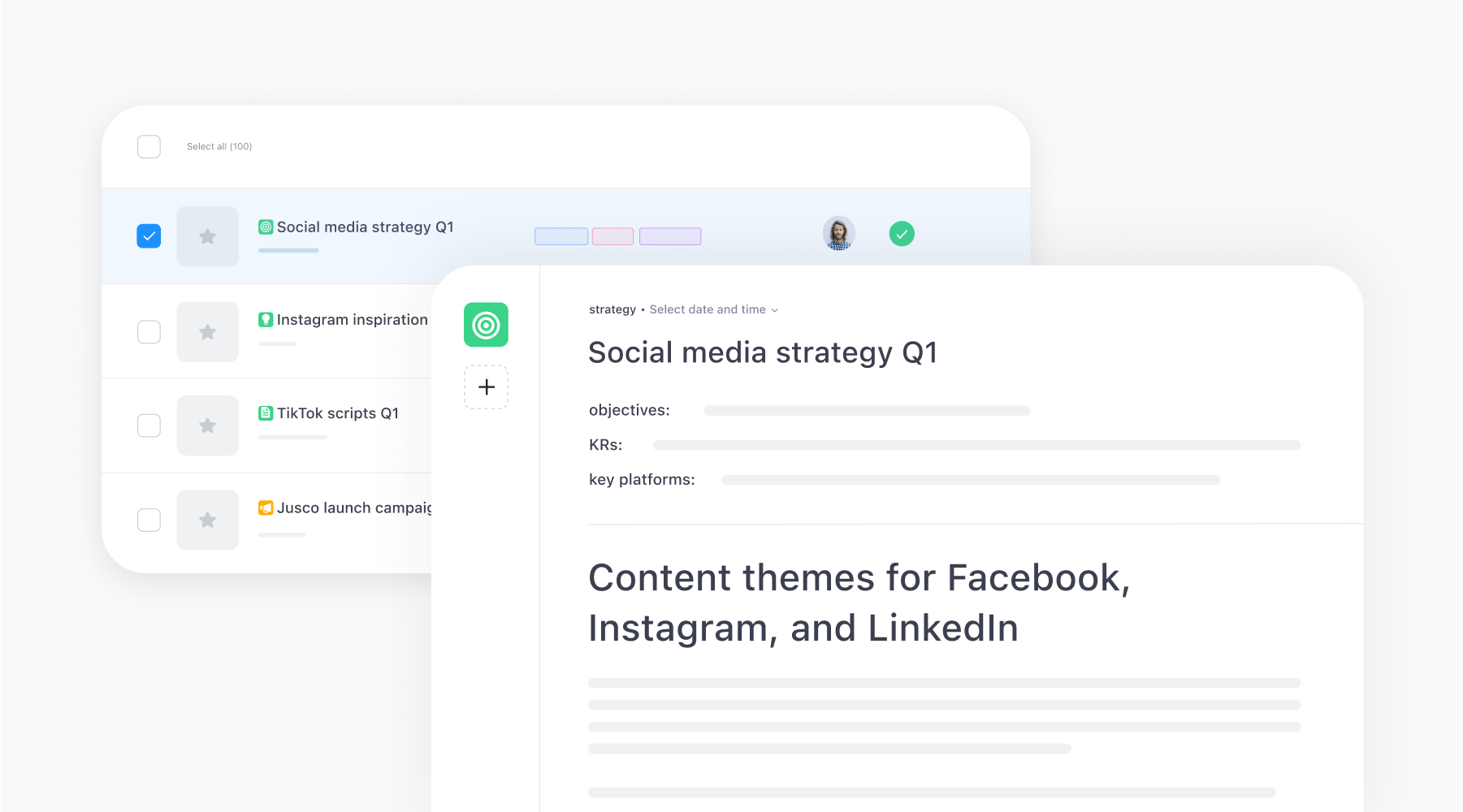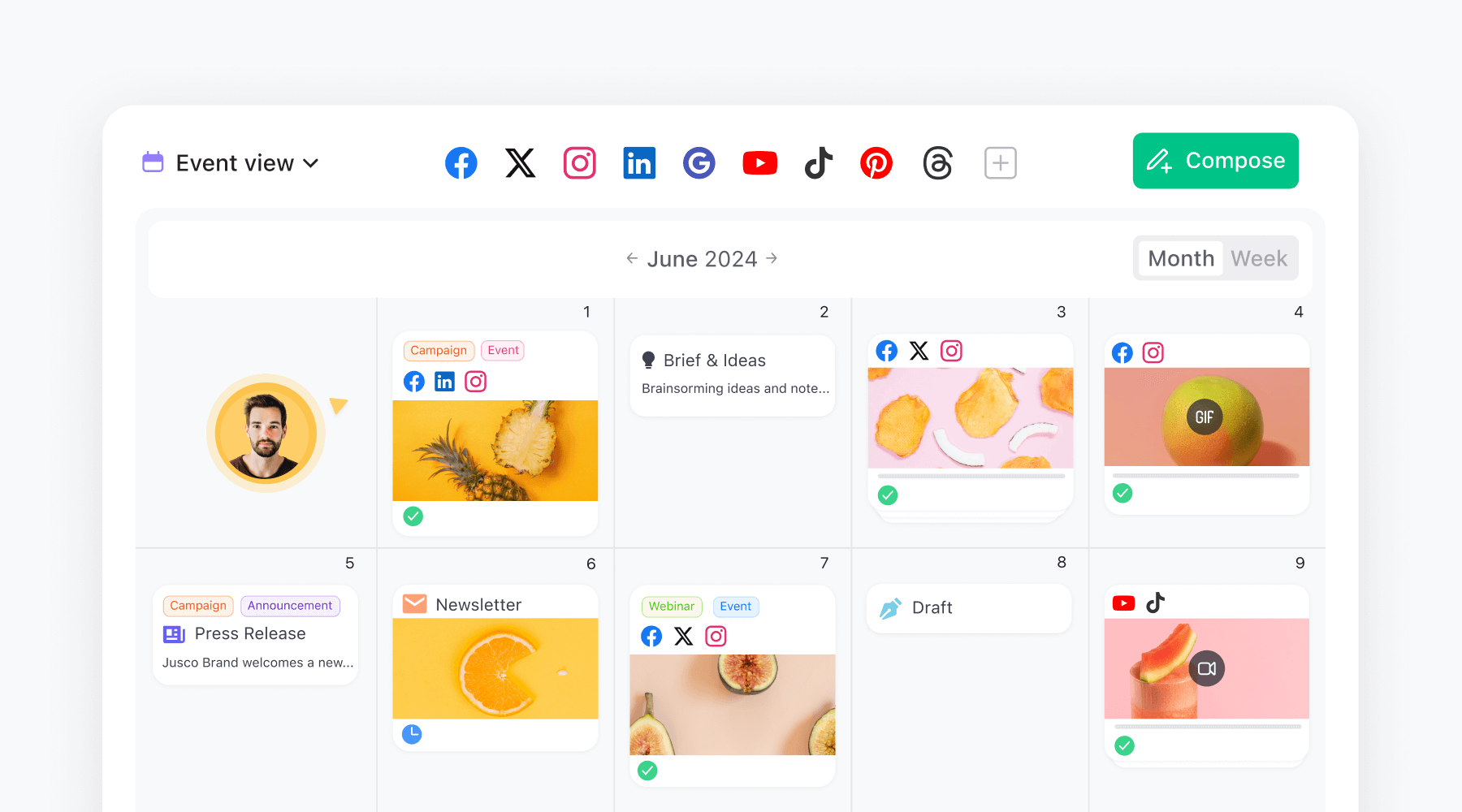For years, marketers fed the Content Monster with nonstop posts. Big names said volume won, so we treated visibility like a numbers game. That playbook’s outdated. Engagement now hinges on quality and clear relevance. According to the GWI study for the Financial...
How to manage your creative agency workflow in 2026

Running an agency is a balancing act between profitability and quality of service. It’s often a fine line to tread — you need to run an efficient team, keep existing clients happy, and find the room to take on more work.
Doing all of that well is both a science and an art form. And doing it consistently is the key to long-term growth. A carefully thought-out agency workflow, complemented by the right tools like approval software, goes a long way to finding that consistency so that your team achieves repeatable and scalable success.
What is an agency workflow?
An agency workflow is a step-by-step process documentation that highlights the work being done, the responsibility for each step, deadlines, handovers, and quality checklists. Documenting your agency workflows, and reinforcing them in practice, is key to running an efficient team and delivering quality services to your clients. Periodically evaluating and improving your agency workflows enables you to identify bottlenecks and common errors, and then act upon discoveries to improve the outcomes.
How to document and improve your agency’s workflow process through Value Stream Mapping
A popular workflow management and improvement technique is Value Stream Mapping (VSM). It was initiated in the manufacturing industry and, in time, it’s gained popularity in all types of companies. It helps you bring all your team members on the same page, point out current problems, and come up with new workflow processes that improve your project success rate.
In the steps below, I’ll refer particularly to your creative process, but the process can easily be adjusted to any part of your agency business.
Step 1. Choose a specific agency workflow and clarify the goal
When you decide to document a specific agency workflow, it’s a great opportunity to solve any issues you’ve experienced in the past. Setting clear goals helps the whole team understand which issues you’re looking to resolve and what to keep in mind as you map the workflow.
For example, let’s say a client was unhappy with some work you delivered because it failed to meet the brief. You may decide to review and document the content creation workflow to prevent that from happening again. With clear goals in place, the team will understand that one aim of reviewing the workflow is to ensure that work always follows and meets the client brief.
Based on the specific problem you’re looking to solve, decide which process needs documenting and clarify why you’re doing this.
Step 2. Include all the relevant people
You need to involve everyone who contributes to the process to create detailed, accurate documentation. If you leave anyone out, you could miss an important step or lack vital context about how the workflow operates.
Get everyone in the same room, or allocate a virtual space for this, and get everyone’s input.
Let’s say you have a team that consists of an account manager (or digital marketing manager). They are the client’s main point of contact, they own the main project milestones, and they oversee all internal work as the project manager. This person will have an overview of all the work being done, but for specific assets, they get contributions from your UX/UI designer, SEO manager, and social media manager.
If you attempt to document the workflow without involving the UX/UI designer, SEO manager, and social media manager, then you may miss out on key insights into the process when creating certain assets.
Step 3. Write down each step
Brainstorm with your team members and collect all specific tasks. Cover the entire process from beginning to end with input from everyone involved. To make sure you gather all relevant information and don’t miss anything, answer questions such as:
- What triggers action at this stage?
- Who is responsible for this step? Who contributes to this step?
- When is the step done? Is there a deadline, is there a specific checklist that needs to be met?
- How is the handover done towards the next step?
In this step, encourage your creative team to come up with all tasks related to the chosen marketing workflow. They will come up with tasks like:
- Meet with the client
- Define the project scope
- Conduct market research
- Prepare the creative brief
- Create content pieces
- Get client feedback
- Publish content
- Create report
Write everything down, including any repetitive tasks that might take place in different steps of the process.
Decide together if it makes sense to go more in-depth or stick to general steps. The key is to cover the relevant information for the chosen workflow and improvement goal.
Step 4. Create a simple visual representation
Gather all the steps mentioned before and put them on a visual map, in chronological order, from left to right. You can do this on a wall with post-its, on a whiteboard, or in a digital tool like PowerPoint or Canva.
Next, write down how much time is spent on each specific task. Differentiate between the active work on the task and the average time spent waiting for input from someone in the team. For example, the time it takes to receive client feedback or the average time a task spends in someone’s backlog before they get to it.
If you don’t have this info, consider taking some time to gather the info.
Accuracy is the most important factor here. It’s not always easy to remember exactly how much time something takes, or how long the wait is before certain things happen. Sometimes it’s as easy as spending 20 minutes to go through emails, or Slack messages, to see how long certain exchanges take. But that’s not always possible.
If you need to, pause the exercise for a week or two and let your team run through the workflow again. This time, have everyone track everything and note down how long it takes.
Here’s how your workflow map could look at this point.
This example illustrates a monthly project timeline, from the initial meeting with the client to define the project goals, to the final project evaluation of results that you’ll use to inform next month’s strategy.
When you’re looking to make process improvements to the team’s content creation phase, you would go more into detail and describe the content creation workflow:
Here, the extra level of detail describes the creative processes and how the account manager collaborates with the graphic designers and team members who own each specific channel.
Step 5. Review the workflow process for potential improvements
Time to evaluate where you waste time, money, or potentially introduce errors. From unnecessary handovers to copy-pasting from one tool to another — many things can go wrong.
Encourage everyone to contribute with ideas, highlight what they’ve noticed, and frame the conversation in a no-blame way. There’s value in highlighting problems this time, and everyone will benefit from an improved process. Answer questions such as:
- Are there any redundant steps that we could eliminate?
- Where do errors happen most often? What can we do to prevent that?
- What’s taking the most time?
- Are there any handovers that could be eliminated?
Tip: Test-run the new process for a few tasks and make any further necessary adjustments.
Step 6. Communicate your workflow
Create a final document presenting the process. It’s useful for everyone on the team to review from time to time, but it comes especially handy when you have to onboard a new team member.
If there are tools involved in your process, you could also create a step-by-step instruction manual on how to complete specific tasks within that tool.
Clients and external stakeholders will also appreciate an easy-to-follow documented workflow. Remove any steps that are strictly internal and create a dedicated version that clarifies the process from an external point of view.
Agency workflow documentation template
If you found the example above useful, you can use this Canva template to document your agency’s workflows. Copy the template to your Canva workspace and use it as the starting point to map out your agency operations.
Streamline your agency workflows with the right tools
Technology plays a crucial role in empowering an efficient team. To successfully run a creative agency, you need the best tools to automate repetitive tasks and maintain effective communications. Project managers also need the ability to assign and track tasks, while clients will appreciate the right level of visibility.
Here are some popular tools to consider:
- Creative workflow management tools
Based on the specific services, look for agency social media management tools like Planable, design tools like Canva or Figma, video production tools like Adobe Premiere or Evercast, or email marketing tools like Mailchimp. An important aspect to look for is that they support team collaboration.
- Project management software
Popular marketing agency software are Asana, Trello, and Basecamp. They allow you to create multiple projects, involve relevant people and clearly assign specific tasks. Most of them also offer a visual resource planning feature that enables you to follow who’s working on what and efficiently plan your resource scheduling.
- Financial workflow tools
Popular accounting software for agencies are Sage, Quickbooks and Honeybooks. If you’re reporting work to your clients by the hour, you can automatically track time with tools like Paymo or Clockify. Integrating a client portal with accounting tools can also help automate recurring invoicing, streamlining financial tasks and ensuring timely payments with less manual effort.
- AI tools
There’s an explosion of software that uses AI for specific tasks — from the general ChatGPT to dedicated content tools like Jasper.AI, or sales tools like Signals.
Planable – the best tool for your agency’s creative process
Planable is a content management tool that allows you to handle your whole creative workflow. It’s built with a deep understanding of agency workflows and streamlines creative projects from the initial strategy stage to automatic publishing and social media analytics.
If you work with multiple clients on social media campaigns, as well as other types of content like blogs, newsletters, or PR, then Planable is the best option for you. It allows you to organize client work in distinct workspaces, each with specific settings and permissions so you can customize workflows to each of your client’s preferences. Planable will make your creative agency look professional, work efficiently, and take on more clients.
Here’s how your agency can manage a creative workflow in Planable:
1. Strategy and ideation
Once you set up your client workspaces, it’s time to get started on documenting the strategy you’ll take. Through the Universal Content feature, Planable allows you to create any type of rich-text content: perfect for strategy docs, campaign briefs, idea collection, video scripts, you name it.
You can keep these internal, or choose to show them to your clients and get their formal approval.
2. Planning
In the calendar view, you can easily define project milestones, get organized through color-coded labels, and drag and drop pieces of content whenever the plan needs to change. No fuss and wasted time, no unclear deadlines or project management misunderstandings.
Everyone can see the social content media calendar and plan their work accordingly.
3. Content creation
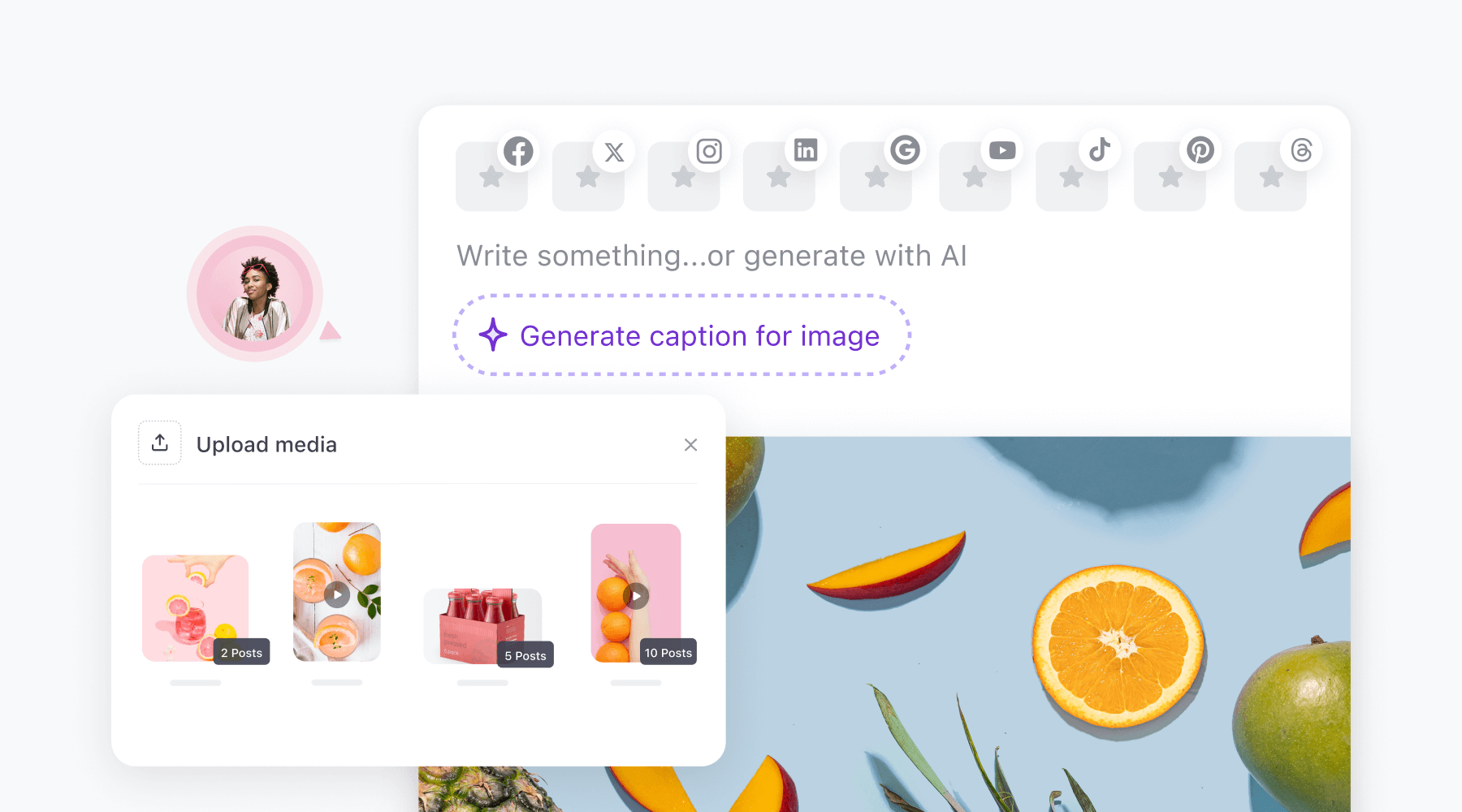
Social media content creation features in Planable
Gather all your design assets in Planable’s Media Library, so everyone on the team has easy access to the client’s approved brand assets and visuals. The tool comes with integrated image and video editors, so whenever there’s a slight adjustment needed, you don’t have to switch tools.
Create content for all major social media platforms with pixel-perfect previews. This allows the client to view and approve content exactly as it will look when published.
You can also work on blog articles, newsletters, press releases, save details regarding upcoming events, and more. Plus, the tool comes with a social media-savvy AI assistant, that can generate captions from scratch, and even recognize the content in your images or videos and suggest relevant captions.
4. Internal checks
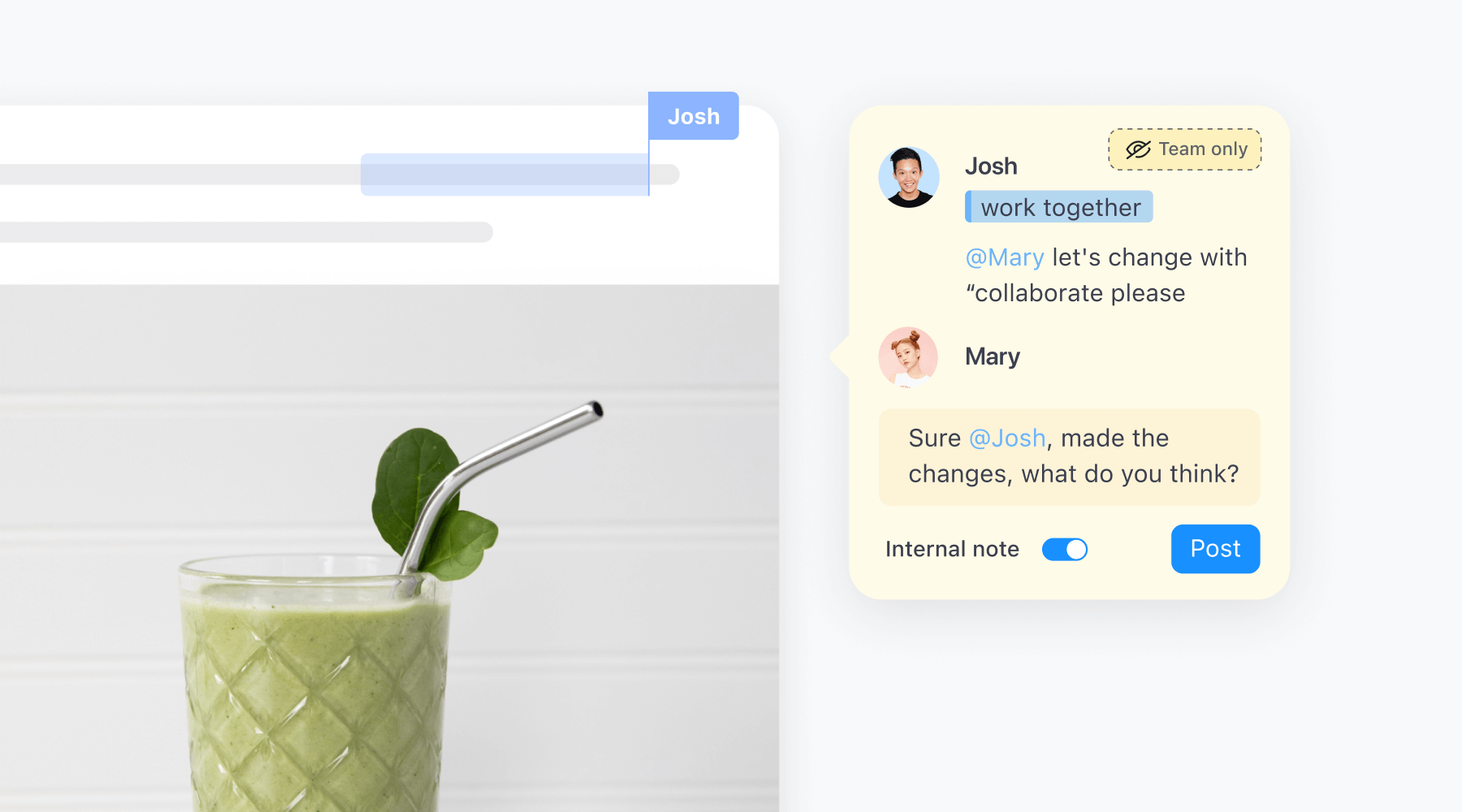
Collaboration via internal note in Planable
You might not want to show the messy behind-the-scenes to clients. That’s easy peasy in Planable, as you can set content drafts as internal-only, work on them with your team, and make them visible to clients when you’re ready.
Plus, it’s super easy for your creative teams to exchange clear feedback through real-time comments, annotations, and text suggestions. Feedback comments can also be set as internal-only, even when the draft of the content is visible to the client.
5. Client approvals
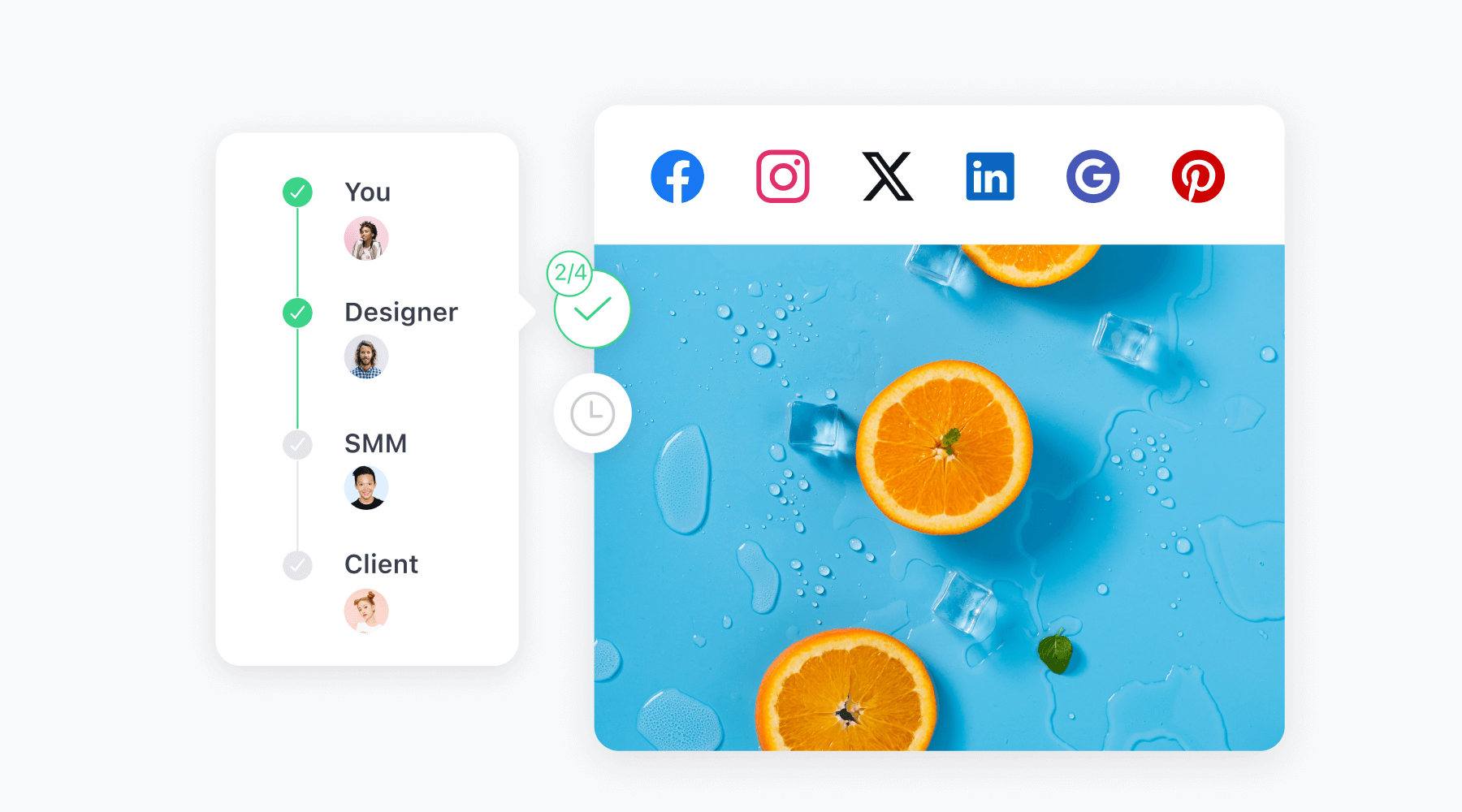
Client approval in Planable
Planable really shines when it comes to client approvals. You can define specific content approval workflows within each client’s workspace — from none required to multiple levels. In a multi-layered setup, with every received approval, the piece of content moves automatically to the next person.
Oh, and each approval is one-click. One-click to ask for approval, one-click to approve. And you can set approval notifications in-app, via email, mobile notifications, and even Slack. Each person involved gets to choose what works best.
6. Content publishing
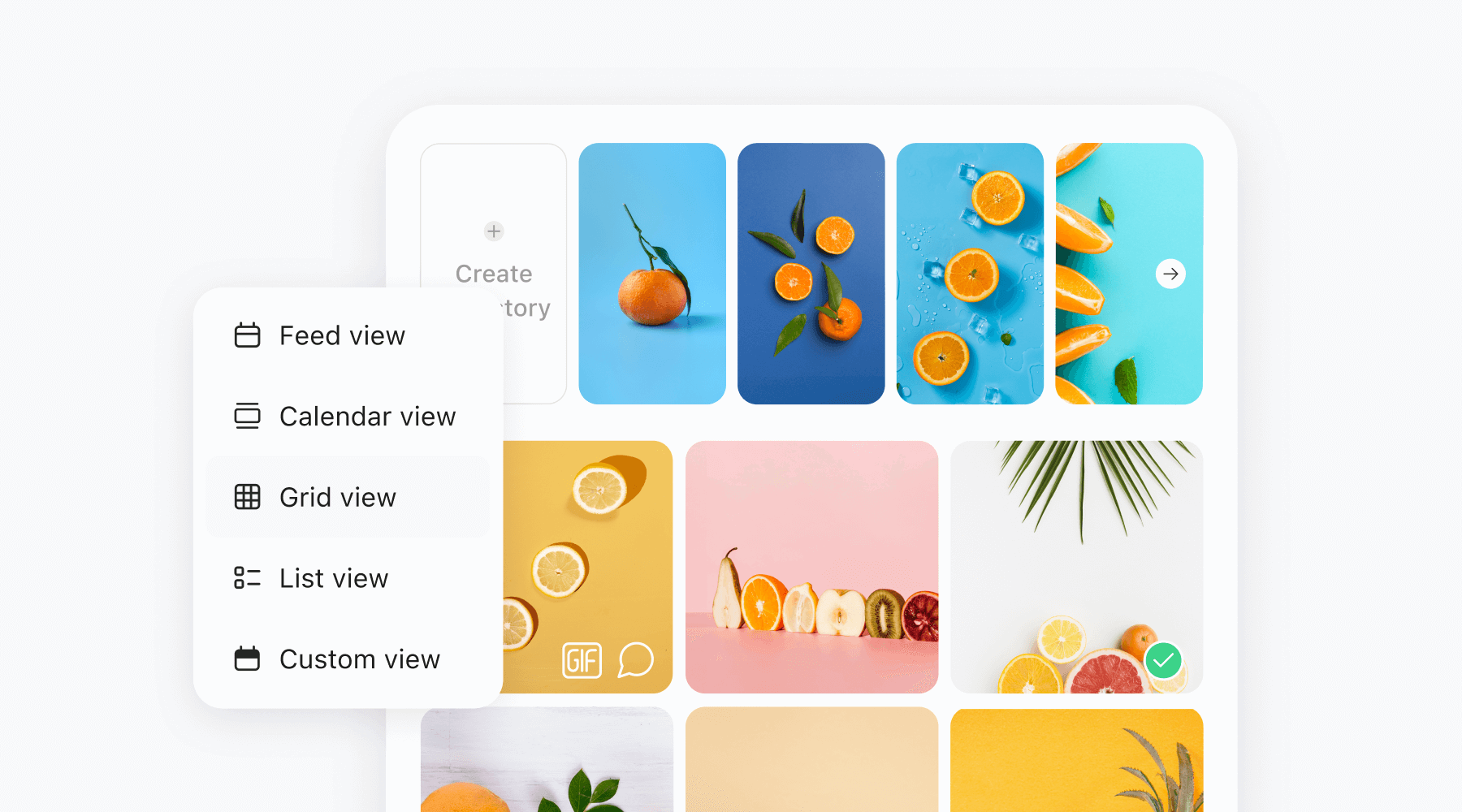
Multiple views options in Planable
Planable supports direct scheduling for Facebook, Instagram, Threads, LinkedIn, TikTok, YouTube, X, Pinterest, and Google Business Profile. Plus you can preview all your content with meticulous clarity: easily switch from the calendar view, to feed view, grid, or list view.
And for the content that doesn’t get automatically published, like blogs or newsletters, you can manually mark pieces as published, so you keep everything clear and organized.
Another neat ace up your sleeve in Planable is that you can set the content to go out automatically once it gets the necessary approvals. That’s one more team touch-point removed on the way to a faster workflow.
7. Analytics and reporting
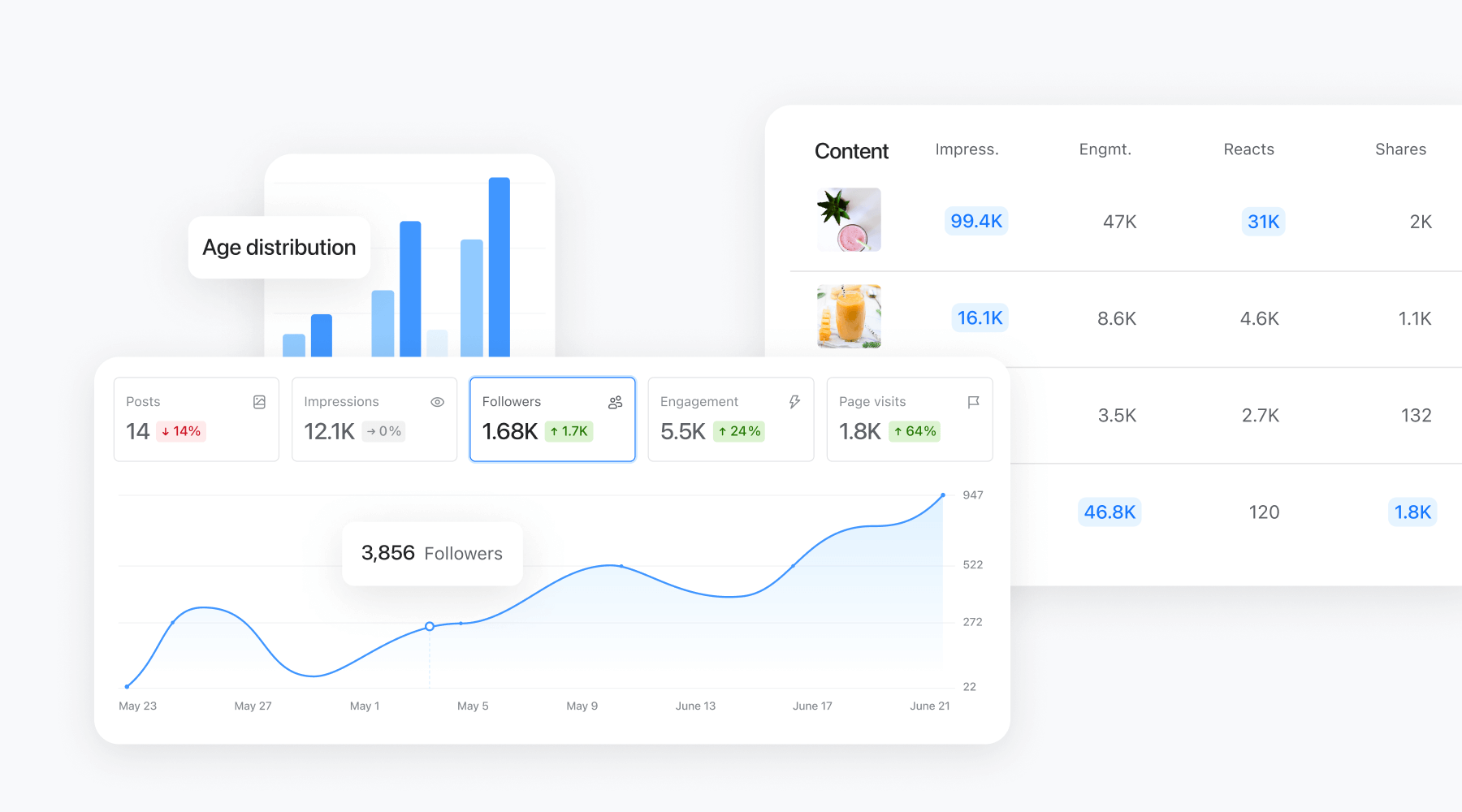
Planable Analytics’s dashbaord
Social media teams can also use Planable’s Analytics feature to track profile performance, audience insights, top-performing content, and detailed post metrics. You can generate beautiful reports to share directly with clients, or use internally to inform future strategy.
Bonus Planable perks for efficient creative workflow management
Planable comes with a mobile app, that allows you to review content on the go, easily upload content from your mobile phone to the media library, or quickly approve that post so you don’t become a bottleneck.
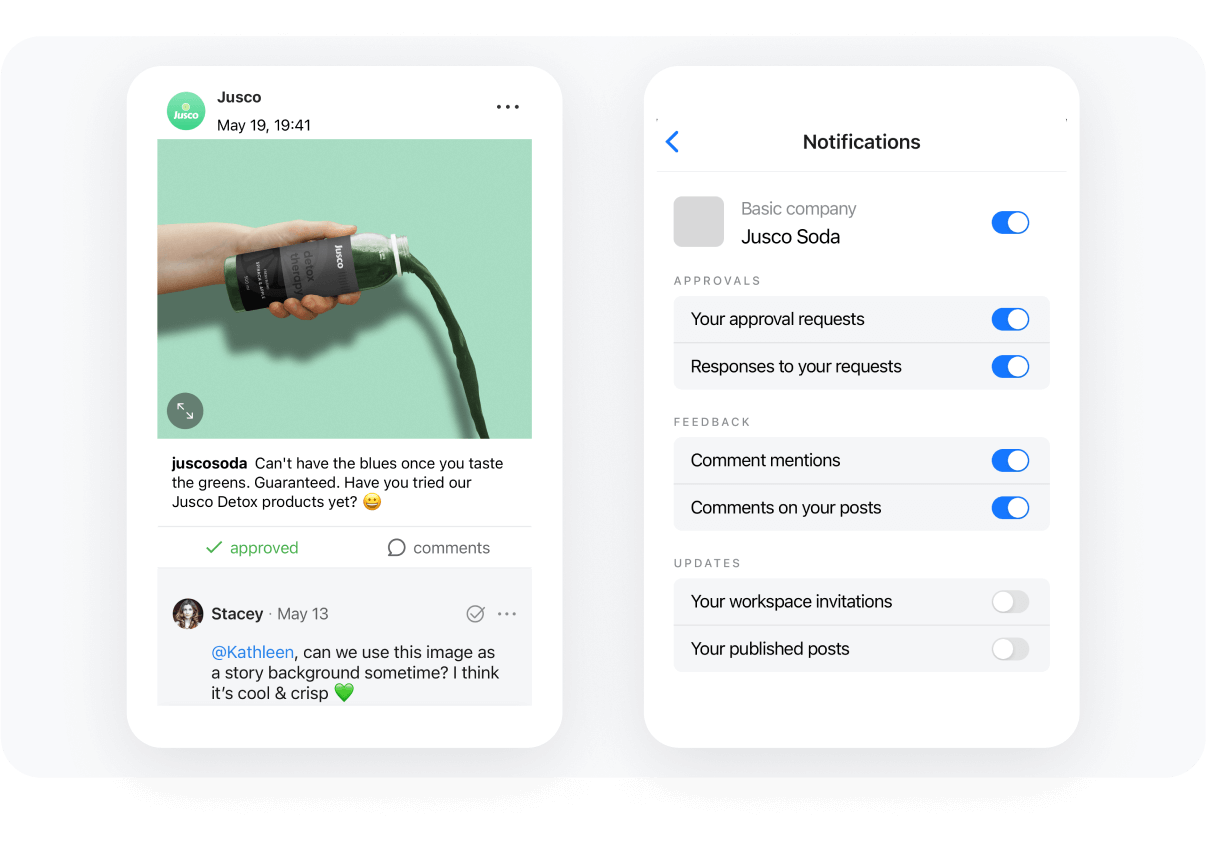
Approvals, feedback and update settings in Planable’s mobile app.
And when you need to focus on one thing at a time, create a custom view and filter out the noise. You can create personal custom views for content that needs your approval, or set up views dedicated to specific campaigns that you make visible to anyone. There are plenty of filters and permissions to choose from, so you easily fulfill all needs.
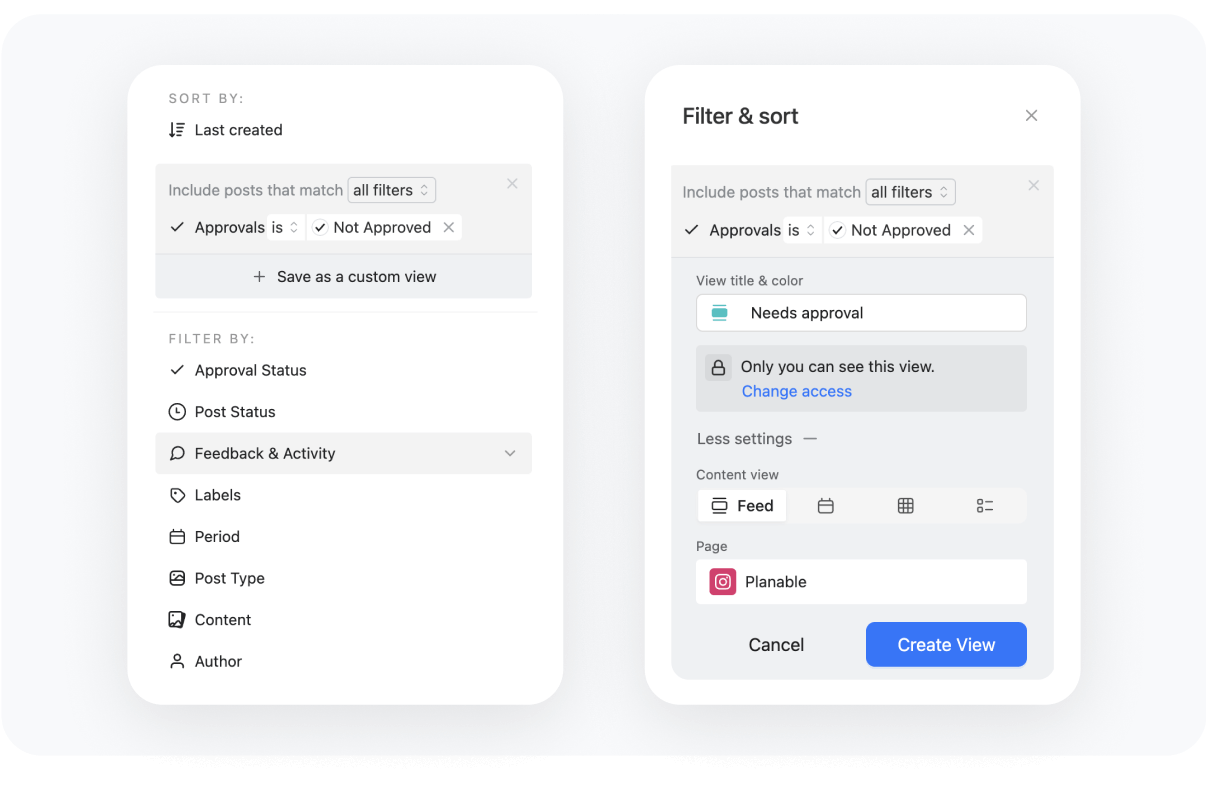
Filter & sort setting in Planable’s mobile app
Other examples of workflows for agencies
The creative workflow process isn’t the only one you could focus on. There are plenty of other areas where you can find potential improvements. Here are some other workflow examples to consider.
Project management workflow
The project management workflow outlines the steps necessary to plan, execute, and complete each project within your agency. A well-documented version helps projects get delivered on time, within budget, and meet client expectations. It should include:
- Defining the project scope
- Setting goals
- Assigning tasks
- Managing resources
- Tracking progress
- Ensuring quality control
- Evaluating outcomes
Sales management workflow
To successfully manage, nurture, and close leads, you need a solid sales management workflow. A standard sales workflow begins with documenting how you plan to generate and qualify leads. Then, establish the triggers within the process for any lead nurturing follow-ups that progress a lead towards closing the deal. Just like the creative workflow, make sure to get everyone’s involvement on the sales team and note down when certain actions are required. An organized approach will help you maintain efficient sales operations and achieve higher conversion rates.
Client onboarding workflow
Once you close a sale, it’s time for the client onboarding workflow. This helps you roll out the red carpet for new clients, ensure a great first impression, and transition towards working happily together. This agency workflow will begin with initial meetings to understand needs and set clear expectations. Next, you have to set up accounts, draft contracts, and gather all necessary information. Introduce them to your team to make them feel at home, and get them accustomed to any dedicated tools you’ll be using.
Team member onboarding workflow
To take on more clients, you’ll need to expand your team too. Start with the essential HR paperwork and set up workstations. Ensure they have access to all the tools and software they’ll need. Introduce them to the team and provide comprehensive training sessions. This process will help your new hires feel well-prepared, understand your company culture, and quickly become valuable contributors to your projects.
Tips for continuous improvement in agency workflows
Continuous improvement in your agency workflows ensures your agency remains efficient and effective. Here are some important things to keep in mind:
- Regularly review your workflows to identify bottlenecks or inefficiencies.
- Encourage your team members to constantly contribute with feedback on their workflow process to improve future projects and efficiency.
- Use the latest technology to automate repetitive tasks and free up time for more strategic work.
- Invest in learning and development opportunities for yourself and your team: adopt new methodologies and industry trends that can enhance your workflow efficiency.
A culture of continuous improvement goes a long way toward streamlining business processes, boosting your agency’s productivity, and making clients happy.
Streamline your creative agency workflow for success
There’s no running a business without workflows. And if you’re not intentionally setting them up, then you’re running on autopilot and risking inefficient project management, lower client satisfaction, and below-par business results. Take the first step towards documenting your agency’s workflows today and set your team members up for long-term success.
If you’re running a creative agency, make sure to also give Planable a try. Register now and get the first 50 created posts for free, no credit card required.

Miruna Dragomir, CMO @Planable, ex Social Media Comms Manager @Oracle & ex Marketing Coordinator @Uber. 9 years of experience in social media and marketing. Built Planable’s brand and reputation and helped grow it from 50 customers to over 6.5K. Social media fanatic, tech geek & a sucker for learning.
